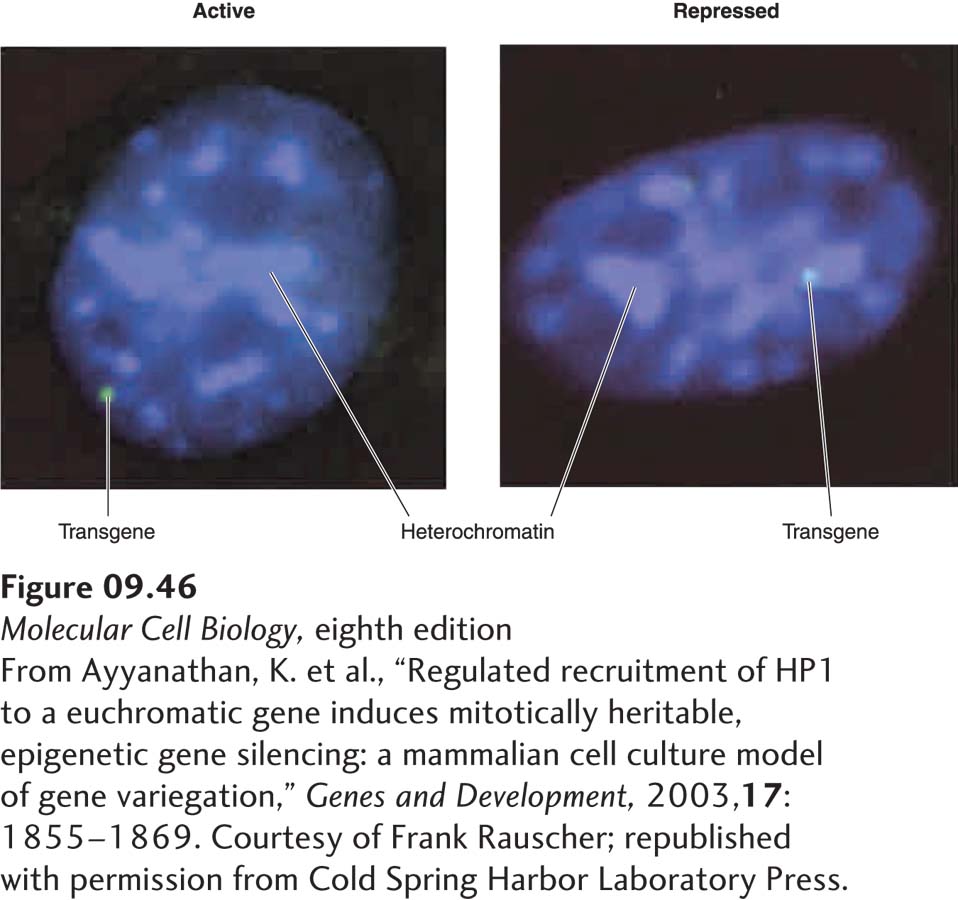
FIGURE 9- 46 Association of a repressed transgene with heterochromatin. Mouse fibroblasts were stably transformed with a transgene that contained binding sites for an engineered repressor. The repressor was a fusion between a DNA- binding domain, a repression domain that interacts with the KAP1 co- repressor complex, and the ligand- binding domain of a nuclear receptor that allows the nuclear import of the fusion protein to be controlled experimentally (see Figure 9- 45 ). DNA was stained blue with the dye DAPI. Brighter- staining regions are regions of heterochromatin, where the DNA concentration is higher than in euchromatin. The transgene was detected by hybridization of a fluorescently labeled complementary probe (green). When the recombinant repressor was retained in the cytoplasm, the transgene was transcribed (left) and was associated with euchromatin in most cells. When hormone was added so that the recombinant repressor entered the nucleus, the transgene was repressed (right) and associated with heterochromatin. Chromatin immunoprecipitation assays (see Figure 9- 18 ) showed that the repressed gene was associated with histone H3 methylated at lysine 9 and HP1, whereas the active gene was not.
[From Ayyanathan, K. et al., “Regulated recruitment of HP1 to a euchromatic gene induces mitotically heritable, epigenetic gene silencing: a mammalian cell culture model of gene variegation,” Genes and Development, 2003, 17:1855– 1869. Courtesy of Frank Rauscher; republished with permission from Cold Spring Harbor Laboratory Press.]
[Leave] [Close]